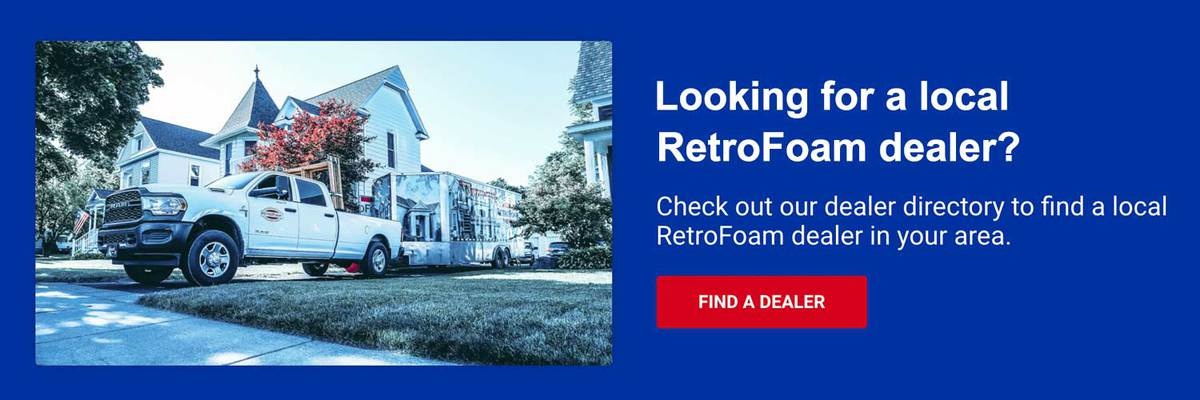How Not to Lose Insulation Coverage After Home Improvement Projects


If you have some home improvement projects in mind, make sure you don’t forget about your existing insulation.
Now you’re probably wondering what insulation has to do with adding lighting, a bathroom fan, or wiring to your home.
As a project manager here at RetroFoam of Michigan, it’s something I have seen time and time again. A homeowner has a small project done maybe in their attic, walls, or crawl space and the contractor doesn’t put the insulation back where they found it.
When this happens, you’re creating a break in your insulation that wasn’t there before. This leads to challenges with your home’s comfort and energy efficiency that you didn’t experience before.
There are ways you can avoid this, so I have come up with a few ways you can avoid insulation gaps.
How to Avoid Insulation Air Gaps
The last thing you want is to add improvements to your home that lead to another problem popping up.
The first thing you want to do when hiring a contractor for your project is to make sure you are on the same page. This will include talking about what happens to your insulation during and after the project.
Let’s use the attic as the first example.
If you are adding lighting or a fan, then you are creating a hole that used to be covered by insulation. If the contractor doesn’t put the insulation back, or there isn’t a plan to seal around that hole, then you’re going to notice comfort issues in your home as you’re now open to air leaks. The money you’re paying to heat or cool is literally now escaping through that opening in the attic and then the roof.
Next, let’s talk about those walls.
Fishing electrical wires through the walls can be tricky and again leave you with an insulation gap if it isn’t done properly.
There is a chance if there is fiberglass in your walls that the material could get ripped. This can happen if the paper backing is facing the exterior instead of your living space. Loose-fill cellulose and foam insulation in the walls won’t have this same issue as the wiring can be pushed through using fish tape.
Lastly, the crawl space.
Adding pipes, wiring, or even ductwork in the crawl space could leave you more exposed than you would like.
The big culprit here is the running to pipes through the crawl space. This is because at some point there is a hole to the outside and if there isn’t a seal around it then you’ve created a superhighway for air leaks.
Running wiring and ductwork is more a concern of existing insulation being misplaced, opening up the crawl space for air movement from the ground up or through the foundation walls.
So, now you’re wondering how to avoid this. There are a few avenues available to you.
I recommend asking the contractor to show you a photo of the space before the work begins and another after it is finished. This is helpful especially for spaces you can’t easily get access to. Also, the contractor obviously can’t take photos of the inside of your walls, but they can let you know if they hit any obstacles like snagging the fiberglass.
Another option is to upgrade your insulation after the project is completed. Cellulose and fiberglass will break down over time, so give it a look and see if new insulation should be part of your plan. Some of the most common options for home insulation are fiberglass, cellulose, and of course foam.
Air Sealing Your Home
Sealing around the holes created in your home is key to keeping your home comfortable while not paying a small fortune in monthly energy bills. So, make sure you or your contractor put the insulation back in place at the completion of the project if it was moved during the work.
Many homeowners have decided to upgrade their insulation in conjunction with similar home improvement projects. If you decide to upgrade your insulation following your project, you can choose traditional insulation or to air seal your entire home with foam.
If you want to learn more about the other benefits of foam insulation, we have a ton of resources you might find helpful on our website.
Related Articles
Home Improvements or Foam Insulation: Which Comes First?
About Andy Daul
Andy’s experience installing spray foam helps him to know exactly how to fix comfort and energy efficiency problems in the home. He has also taken courses with BASF where he learned about Icynene spray foam and became a certified installer. Each day Andy will meet with several homeowners to discuss solutions to the insulation-related problems in their homes. His goal is to make sure every homeowner has a clear understanding of how foam can help, as well as the installation process. In his free time, Andy works with his children’s non-profit Snuggle Sacks, which provides kits to 12 shelters in Flint, Lansing, and Detroit. He is also the drummer in the band Sugar Hook and enjoys boating and golfing.


